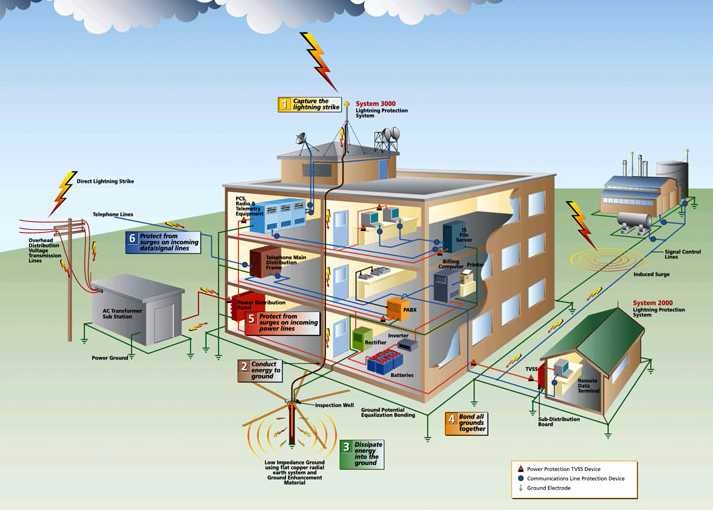Commercial Building Electrical Design
Are you interested in commercial building electrical design? Whether you are looking to learn more about the subject or are in need of design services, this post will cover important aspects of commercial building electrical design. From pain points to best practices, read on to discover the ins and outs of this essential aspect of construction.
Pain Points of Commercial Building Electrical Design
Commercial building electrical design can be a complex and challenging process. Ensuring the safety of occupants, optimizing energy efficiency, and complying with codes and regulations are just a few of the pain points that designers and engineers encounter. Additionally, planning for future growth and changes, such as the need to add more outlets or accommodate increased electrical demand, can be difficult.
Target of Commercial Building Electrical Design
The ultimate goal of commercial building electrical design is to create a safe, functional, and efficient electrical system that meets the needs of the building and its occupants. This can involve designing lighting, power distribution, and communication systems that work together and are easy to maintain. Successful commercial building electrical design also involves staying up-to-date with new technologies, codes, and regulations.
Main Points of Commercial Building Electrical Design
In summary, commercial building electrical design involves creating electrical systems that are safe, efficient, compliant, and easy to maintain. Pain points of the process include ensuring safety and meeting codes, optimizing energy efficiency, and planning for future growth. Successful electrical design must meet the needs of the building and occupants, while staying up-to-date with new technologies and regulations.
Best Practices for Commercial Building Electrical Design
One of the best ways to approach commercial building electrical design is to work with experienced professionals who understand the unique challenges and requirements of the process. Collaborating with architects, engineers, and contractors can help ensure that your electrical system meets your building's needs and stays compliant with regulations.
Another best practice is to prioritize energy efficiency by using products and designs that reduce energy waste and lower electric bills. This can include using LED lighting, optimizing HVAC systems, and installing energy-efficient appliances.

Finally, planning for future growth and changes is important for commercial building electrical design. This involves designing a flexible system that can accommodate changes in electrical demand, technology, and occupancy. By incorporating these best practices, you can create an electrical system that is safe, efficient, and adaptable.
The Importance of Compliance in Commercial Building Electrical Design
One essential aspect of commercial building electrical design is complying with codes and regulations. These regulations are in place to ensure safety and prevent electrical accidents and fires. Meeting these requirements involves understanding local codes and regulations, as well as following industry standards and best practices.

The Benefits of BIM in Commercial Building Electrical Design
Building Information Modelling (BIM) is a software tool that can help streamline the commercial building electrical design process. BIM provides a digital representation of a building's electrical and mechanical systems, allowing designers and engineers to collaborate in real-time and catch errors early on. The ability to see the entire building and its systems in 3D can help prevent conflicts and ensure all systems work together seamlessly.
The Role of Smart Technology in Commercial Building Electrical Design
Smart technology is becoming increasingly integrated into commercial building electrical design. From automated lighting systems to intelligent building management systems that optimize energy usage, smart technology can help improve efficiency, reduce costs, and provide occupants with a better overall experience. By incorporating smart technology into your electrical design, you can create a cutting-edge building that will stand out from the crowd.
Question and Answer
Q: Why is it important to prioritize energy efficiency in commercial building electrical design?
A: Prioritizing energy efficiency can help reduce energy costs, lower your building's environmental impact, and provide a more comfortable environment for occupants.
Q: What are some common pain points encountered during the commercial building electrical design process?
A: Common pain points include ensuring safety and compliance with regulations, optimizing energy efficiency, and planning for future growth and changes.
Q: How can BIM help streamline the commercial building electrical design process?
A: BIM provides a digital representation of a building's electrical and mechanical systems, allowing designers and engineers to collaborate in real-time and catch errors early on. This can help prevent conflicts and ensure all systems work together seamlessly.
Q: What role does smart technology play in commercial building electrical design?
A: Smart technology can help improve efficiency, reduce costs, and provide occupants with a better overall experience. From automated lighting systems to intelligent building management systems, incorporating smart technology can make your building stand out from the crowd.
Conclusion
Commercial building electrical design is a complex but essential aspect of construction. By prioritizing safety, compliance, and efficiency, while planning for future growth and changes, you can create an electrical system that meets the needs of your building and its occupants. By incorporating BIM and smart technology, you can streamline the design process and create a cutting-edge building that stands out from the crowd.
Gallery
Electrical Installation For Commercial Building

Photo Credit by: bing.com / electrical commercial hvac building systems modern installation specifying consulting
Electrical Design For Commercial Buildings | [Guide] | Design-Build Firm
![Electrical Design For Commercial Buildings | [Guide] | Design-Build Firm](https://east-westelectric.com/wp-content/uploads/2019/08/architecture-blur-building-449559-1-770x230.jpg)
Photo Credit by: bing.com /
Building Electrical Systems

Photo Credit by: bing.com / electrical building systems buildings service subsystems control typical training supply input addresses existing course live
Jb Electrical | Jb Electrical Website And Blog
Photo Credit by: bing.com / electrical installation jb commercial lighting eu anytime gym fitness power
Building Information Modelling (BIM) - An Introduction

Photo Credit by: bing.com / mep services electrical revit bim mechanical building autocad plumbing information cad system modeling modelling layout using designs tesla introduction ventilation
0 Response to "Commercial Building Electrical Design"
Posting Komentar